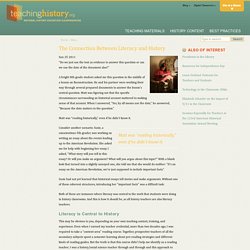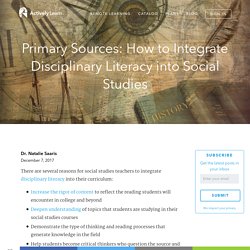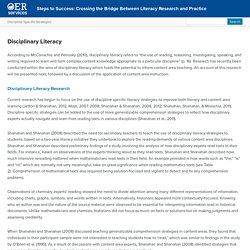

The Girl with a Mind for Math: The Story of Raye Montague by Julia Finley Mosca. 25 Women Who Thought of It First by Jill Sherman. How We Got to Now: Six Innovations That Made the Modern World by Steven Johnson. The Gettysburg Address by Abraham Lincoln. Nicolay Copy Named for John G.

Nicolay, President Lincoln's personal secretary, this is considered the "first draft" of the speech, begun in Washington on White house stationery. The second page is writen on different paper stock, indicating it was finished in Gettysburg before the cemetery dedication began. Lincoln gave this draft to Nicolay, who went to Gettysburg with Lincoln and witnessed the speech. The Library of Congress owns this manuscript. Four score and seven years ago our fathers brought forth, upon this continent, a new nation, conceived in liberty, and dedicated to the proposition that all men are created equal.
Now we are engaged in a great civil war, testing whether that nation, or any nation so conceived, and so dedicated, can long endure. The Declaration of Independence, 1776 - 1776–1783. By issuing the Declaration of Independence, adopted by the Continental Congress on July 4, 1776, the 13 American colonies severed their political connections to Great Britain.

The Declaration summarized the colonists’ motivations for seeking independence. By declaring themselves an independent nation, the American colonists were able to confirm an official alliance with the Government of France and obtain French assistance in the war against Great Britain. The Declaration of Independence Throughout the 1760s and early 1770s, the North American colonists found themselves increasingly at odds with British imperial policies regarding and . 2019OSTB. 6 Free Online Resources for Primary Source Documents. The Common Core Learning Standards describe the importance of teaching students how to comprehend informational text.
They are asked to read closely, make inferences, cite evidence, analyze arguments and interpret words and phrases as they are used in a text. Primary source documents are artifacts created by individuals during a particular period in history. This could be a letter, speech, photograph or journal entry. If you're looking to integrate social studies into your literacy block, try out one of these resources for primary source documents. 1.
The National Archives is a fantastic resource. 2. Also run by the National Archives, DocsTeach is full of activities for educators. Teachinghistory.org. Sun 25 2011 “Do we just use the text as evidence to answer this question or can we use the date of the document also?”

A bright 8th-grade student asked me this question in the middle of a lesson on Reconstruction. He and his partner were working their way through several prepared documents to answer the lesson’s central question. Matt was figuring out that the specific circumstances surrounding an historical account mattered to making sense of that account. Integrate Disciplinary Literacy into Social Studies. Dr.

Natalie Saaris There are several reasons for social studies teachers to integrate disciplinary literacy into their curriculum: Increase the rigor of content to reflect the reading students will encounter in college and beyondDeepen understanding of topics that students are studying in their social studies coursesDemonstrate the type of thinking and reading processes that generate knowledge in the fieldHelp students become critical thinkers who question the source and bias of information they encounter The best way to integrate disciplinary historical literacy is through the use of primary sources: these can take the form of transcripts of speeches, letters, political cartoons, editorials, maps, legislative documents, or firsthand accounts of historical events. A text that tries to interpret these primary sources, such as a textbook or biography, does not qualify as a primary source. 1. 2.
The challenge for many teachers is finding these primary source documents. How to Integrate Disciplinary Literacy in the Science Curriculum. Dr.

Natalie Saaris Science disciplinary literacy may seem like uncharted water for STEM teachers who have not traditionally considered reading their purview. The case for integrating disciplinary literacy is compelling: increased academic rigor, instruction that better prepares students to be independent learners in the field, and authentic learning that more closely resembles the work of experts in the field.
But making disciplinary literacy a reality in the classroom can be far more challenging, particularly for those teachers who have not traditionally focused on reading skills. How do you integrate literacy into existing instruction in a way that doesn't seem supplemental? Here’s our guide to answering just those questions and making disciplinary literacy a reality in the science classroom. 1. Rather than creating a separate unit on science literacy where you try to build skills in isolation, integrate science reading into your existing curriculum. 2. 3.
Correlation or causation? Ccss disciplinary literacy statement. Complex Text and Disciplinary Literacy. Disciplinary Literacy and the Value of Making Connections. Three Directions for Disciplinary Literacy. Steps to Success: Crossing the Bridge Between Literacy Research and Practice. According to McConachie and Petrosky (2010), disciplinary literacy refers to “the use of reading, reasoning, investigating, speaking, and writing required to learn and form complex content knowledge appropriate to a particular discipline” (p. 16).

Research has recently been conducted within the area of disciplinary literacy which holds the potential to inform content area teaching. An account of this research will be presented next, followed by a discussion of the application of content area instruction. Ila content area disciplinary literacy strategies frameworks. Ila e ssentials 8069.